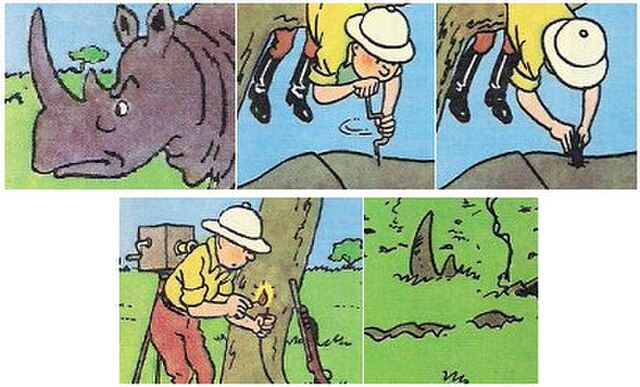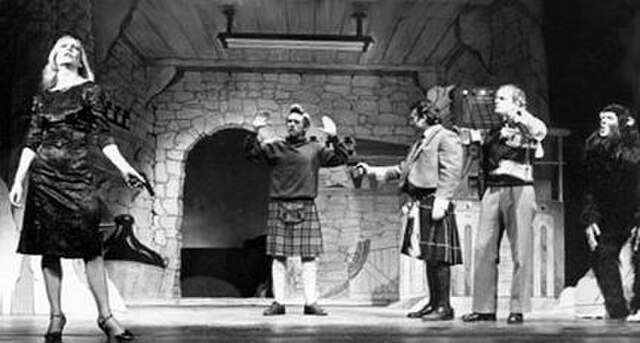Tintin in America is the third volume of The Adventures of Tintin, the comics series by Belgian cartoonist Hergé. Commissioned by the conservative Belgian newspaper Le Vingtième Siècle for its children's supplement Le Petit Vingtième, it was serialized weekly from September 1931 to October 1932 before being published in a collected volume by Éditions du Petit Vingtième in 1932. The story tells of young Belgian reporter Tintin and his dog Snowy who travel to the United States, where Tintin reports on organized crime in Chicago. Pursuing a gangster across the country, he encounters a tribe of Blackfoot Native Americans before defeating the Chicago crime syndicate.
Cover of the English edition
Tipis in a Blackfoot settlement in 1933
Chicago gangster Al Capone was included as an antagonist in Tintin in America
The social commentary was toned down in the second edition, as evidenced by this scene
The Adventures of Tintin is a series of 24 comic albums created by Belgian cartoonist Georges Remi, who wrote under the pen name Hergé. The series was one of the most popular European comics of the 20th century. By 2007, a century after Hergé's birth in 1907, Tintin had been published in more than 70 languages with sales of more than 200 million copies, and had been adapted for radio, television, theatre, and film.
The early Adventures of Tintin naïvely depicted controversial images, which Hergé later described as "a transgression of my youth". In 1975, he substituted this sequence with one in which the rhino accidentally discharges Tintin's rifle.
Tintin and the Black Island at the Arts Theatre in the West End of London, by the Unicorn Theatre Company, in 1980–81
The Tintin Shop in Covent Garden, London
Belgian Post's series of postage stamps "Tintin on screen" issued 30 August 2011 featuring a chronological review of Tintin film adaptations made through years.








